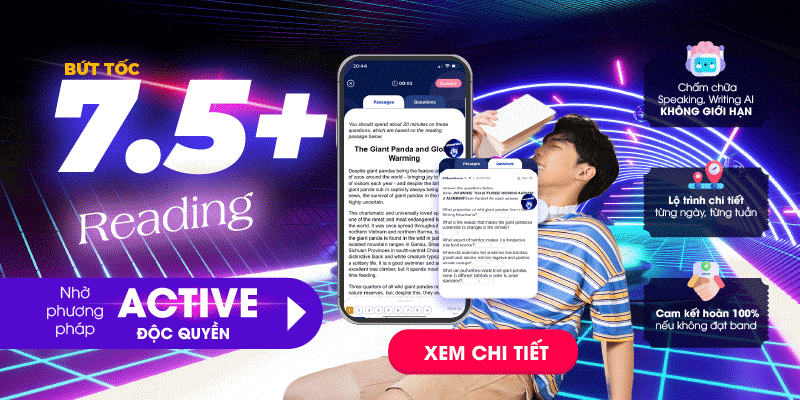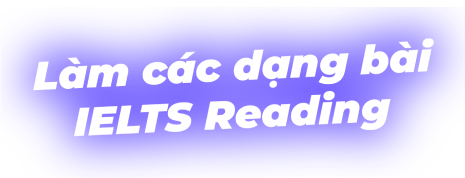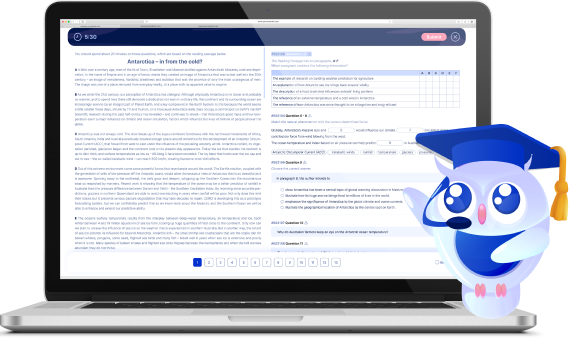Edmicro IELTS sẽ giới thiệu với bạn các bước chi tiết và những lưu ý về cách làm IELTS Reading Matching Heading!
Tổng quan về IELTS Reading Matching Heading
IELTS Reading Matching Heading là dạng bài dùng để đánh giá khả năng nắm bắt ý chính của từng đoạn văn và tìm kiếm thông tin cụ thể. Nó yêu cầu bạn nối các tiêu đề (headings) được cung cấp với các đoạn văn bản tương ứng trong bài đọc.
Đặc điểm của dạng bài này:
- Số lượng: Số lượng tiêu đề (headings) luôn luôn nhiều hơn số lượng đoạn văn bản. Mỗi một đoạn văn chỉ có một tiêu đề.
- Thứ tự: Các tiêu đề không được sắp xếp theo thứ tự các đoạn văn.
- Vị trí và số câu: thường xuất hiện trong bài đọc số 1 và 2 trong tổng số 3-4 bài đọc của đề thi Reading. Dạng bài này thường chiếm 4-6 câu hỏi.

Xem thêm: Summary Completion IELTS Reading – Chinh Phục Bài Đọc
4 Bước về Cách Làm IELTS Reading Matching Heading
Để làm tốt dạng bài IELTS Reading Matching Heading, thí sinh cần nắm vững 4 bước sau:
Bước 1: Đọc câu hỏi và các thông tin đề bài
Đọc kỹ yêu cầu đề bài và đọc lướt các tiêu đề. Xác định nội dung chính của từng heading và gạch chân những từ khóa quan trọng.
| Ví dụ minh họa | Phân tích |
| The reading passage has 7 sections. | Cho biết bài đọc này có 7 đoạn văn |
| Match the most suitable headings A-J for section 1-6 from the list of headings below. | Yêu cầu nối những tiêu đề phù hợp được đánh dấu bằng chữ cái A – G cho các đoạn văn đánh số 1-6, được lấy từ danh sách tiêu đề cho trước. |
| There are more headings than sections so you will not use all of them. | Cho bạn biết rằng có nhiều tiêu đề hơn số đoạn và sẽ có vài tiêu đề không dùng đến. |
| The first section is an example for you. | Đoạn đầu tiên được dùng làm ví dụ |
| Tiêu đề ví dụ: Revival of homeopathy (Example) | Tiêu đề này cho ta biết nội dung chính của đoạn là để nói về: Sự trở lại mạnh mẽ của biện pháp chữa bệnh homeopathy |
Bước 2: Bắt đầu đọc đoạn văn đầu tiên
Tìm kiếm những thông tin, ý tưởng hoặc từ ngữ tương ứng với các heading đã gạch chân. Phân tích đoạn văn bằng cách gạch chân những từ khóa phát hiện được.
| Ví dụ minh họa | Phân tích |
| Homeopathy is an alternative system of medicine, founded in the early 19th century by a German physician, Dr. Samuel Hahnemann. Since 1980, homeopathy has experienced a strong resurgence of interest in North and South America as well as in Europe. Surveys indicate that more than a third of French physicians have prescribed homeopathic remedies and almost 50 percent of British physicians have referred patients for homeopathic treatment. | Đoạn văn này có nội dung là giới thiệu về Homeopathy và cho chúng ta biết rằng đây là liệu pháp được nhiều người quan tâm đến nhiều hơn so với khi nó mới xuất hiện vào đầu thế kỷ XIX. |
Bước 3: Đối chiếu và chọn ra heading phù hợp nhất
Từ những gì bạn gạch chân và phân tích ở bước trên, hãy đối chiếu với danh sách tiêu đề cho trước để quyết định tiêu đề nào phù hợp nhất.
| Ví dụ minh họa | Phân tích |
| Homeopathy is an alternative system of medicine, founded in the early 19th century by a German physician, Dr. Samuel Hahnemann. Since 1980, homeopathy has experienced a strong resurgence of interest in North and South America as well as in Europe. Surveys indicate that more than a third of French physicians have prescribed homeopathic remedies and almost 50 percent of British physicians have referred patients for homeopathic treatment. | Trong tất cả các tiêu đề được đưa ra trong danh sách, tiêu đề “Revival of homeopathy” là phù hợp nhất. |
Bước 4: Hoàn thành các đoạn văn còn lại và kiểm tra lại bài
Với đoạn văn sau đó, bạn hãy lặp lại các bước trên để quyết định tiêu đề nào sẽ hợp với đoạn văn nhất. Sau khi đã hoàn thành, thí sinh cần kiểm tra lại đáp án để đảm bảo rằng câu trả lời mình là chính xác.
Xem thêm: Sentence Completion IELTS Reading Hack Điểm IELTS Đơn Giản
Các lưu ý về Cách Làm IELTS Reading Matching Heading
| Chú ý các câu mở và kết đoạn | Thông thường câu mở đoạn hoặc câu thứ hai sẽ cho ta biết được nội dung chính của đoạn văn. Nếu không tìm được ý chính từ câu mở, bạn có thể chuyển sang câu kết. Thông thường, đoạn kết sẽ tóm tắt lại ý toàn bài. |
| Luyện tập thường xuyên | Càng luyện tập nhiều, bạn càng có khả năng xác định và kết hợp thông tin tốt hơn. |
| Làm quen với dạng bài đọc IELTS này | Hiểu các loại câu hỏi, thông tin khác nhau và cách xác định chúng. |
| Quản lý thời gian | Thực hành quản lý thời gian của bạn một cách hiệu quả để hoàn thành nhiệm vụ trong thời gian quy định. Thời gian hợp lý để hoàn thành một bài IELTS Reading Matching Heading là khoảng 10 phút với số lượng từ 4 đến 6 câu. |

Xem thêm: Chiến Lược Làm Bài Reading IELTS Bật Band Cực Nhanh
Bài minh họa Cách Làm IELTS Reading Matching Heading
Homeopathy
Revival of homeopathy (Example)
Homeopathy is an alternative system of medicine, founded in the early 19th century by a German physician, Dr. Samuel Hahnemann. Since 1980, homeopathy has experienced a strong resurgence of interest in North and South America as well as in Europe. Surveys indicate that more than a third of French physicians have prescribed homeopathic remedies and almost 50 percent of British physicians have referred patients for homeopathic treatment.
1
Hahnemann’s discovery of the principle of homeopathy was accidental. After taking some quinine, he noticed that he developed malaria-like symptoms. Since malaria patients were treated with quinine, he speculated that possibly malaria is cured by quinine because it causes malaria-like symptoms in healthy people. He decided to explore his theory by testing other substances used as medicine at the time, such as arsenic and belladonna. His tests were conducted by either taking the substances internally himself or by administering them to healthy volunteers and then recording all of the symptoms the volunteers experienced. He continued his experiments on a wide range of natural substances, often toxic. These recorded results created ‘drug pictures’ which formed the basis for the new system of medicine. The next step was to give the tested substances to patients suffering from the same group of symptoms represented by the drug picture recorded. The results were incredible. People were being cured from diseases that had never been cured before. He condensed his theory into a single Latin phrase: similia similibus curentur (let likes be cured by likes). This means that a disease can be cured by a medicine which produces in a healthy person, symptoms similar to those experienced by the patient.
2
The process of making remedies is very precise. A homeopathic remedy is normally a single substance. The substances may be made from plants, minerals and even animals, for example snake venom and cuttlefish ink. To make remedies, the raw material is dissolved in a mixture that contains approximately 90% alcohol and 10% water. The mixture is left to stand for 2 to 4 weeks, shaken occasionally then strained. The resulting liquid or tincture is then diluted according to very specific measures to a factor of 1:100. For example, to produce a remedy called 1c potency or strength, one drop of the tincture is added to 99 drops of alcohol/water mixture. To produce a 2c potency, one drop of the 1c mixture is added to 99 drops of alcohol/water mixture. Between each mixture the remedy is shaken vigorously. Hahnemann believed that through this process, the energy of the substance was released. Once the remedy has been diluted beyond a 12c potency, it is unlikely that even a molecule of the original substance remains. Yet, ironically, the more dilute the remedy, the stronger it is. This makes no sense in light of present-day science but regardless of what science tells us is impossible, in practice, the higher the dilution the stronger and more lasting the effect.
3
It is this use of high dilutions that has given rise to controversy. Many conventional doctors claim that homeopathy functions only as a placebo because the dosage is so small. However, the clinical experience of homeopathy shows that this tiny dose can be effective: it works on unconscious people and infants, and it even works on animals. Controlled clinical studies performed by medical researchers are demonstrating that homeopathy can be an effective method of treatment for many diseases.
4
The most important part of homeopathic treatment lies in the lengthy interview which the homeopath conducts with the patient. The idea behind this one to two hour consultation is to build up a psychological, emotional and physical history of the patient, to discover the underlying patterns of disease. The homeopath then decides which medicine to prescribe based on the closest match between the patient’s symptoms and the known symptoms elicited by the medicine in a healthy body. A single dose is given for the shortest period of time necessary to stimulate the body’s healing power.
5
How does the concept of homeopathy differ from that of conventional medicine? Very simply, homeopathy attempts to stimulate the body to recover itself. In-stead of looking upon the symptoms as something wrong which must be set right, the homeopath sees them as signs of the way the body is attempting to help itself. Another basic difference between conventional medical therapy and homeopathy is in the role of medication. In much of conventional therapy the illness is controlled through regular use of medical substances. If the medication is withdrawn, the person returns to illness. For example, a person who takes a pill for high blood pressure every day is not undergoing a cure but is only controlling the symptoms. Homeopathy’s aim is the cure: ‘The complete restoration of perfect health,’ as Dr. Hahnemann said.
6
Homeopathy has made significant progress in treating diseases which orthodox medicine finds difficult. Best at dealing with inflammatory conditions such as arthritis, skin conditions, migraines and respiratory problems linked to allergies, it has also proved highly successful at treating asthma. But homeopathy is not an appropriate treatment for degenerative diseases such as emphysema. It cannot treat diseases which destroy tissue, although it can still be beneficial if used in combination with other treatments. Two of the main advantages of homeotherapy are the low cost of the medications and the rarity of adverse reactions. The medicines are inexpensive, safe, and easy to use, so people can learn to handle many of the common illnesses for which they currently seek medical help. The resulting savings in costs and the increase in personal independence represent a significant contribution to health care.
The reading passage has 7 sections.
Match the most suitable headings A-J for section 1-6 from the list of headings below.
There are more headings than sections so you will not use all of them.
The first section is an example for you.
| Sections | Answer | List of Headings |
| 1 | The future of homeopathy | |
| 2 | Concerns about homeopathy | |
| 3 | Comparison with traditional western medicine | |
| 4 | Dr. S. Hahnemann | |
| 5 | Theoretical and experimental basis | |
| 6 | Revival of homeopathy (Example) | |
| Preparation of medicines | ||
| Debate over effectiveness | ||
| Advantages and limitations of homeopathy | ||
| Aspects of treatment |
KEY
- E
- G
- H
- J
- C
- I
Việc luyện cách Làm IELTS Reading Matching Heading thường xuyên sẽ giúp bạn thêm tự tin, rèn luyện kỹ năng đọc và phản xạ trước câu hỏi. Edmicro IELTS chúc bạn đạt được kết quả mong muốn trong kỳ thi IELTS!
Xem thêm:














